

သတင္း- ေသရြာ
ဦးဦးတုိ႔ ႏုိင္ငံတကာေခါင္းေဆာင္ၾကီးတုိ႔ေရ န၀တ မိစၦာၿပိ္တၱာ စစ္အုပ္စုေတြက ေရွ့တလွမ္းတိုးလိုက္ ဦးဦးတို႔ ေၾကျငာခ်က္တေစာင္ထုတ္လိုက္ လုပ္ေနတာ အႏွစ္ ႏွစ္ဆယ္ရိွသြားၿပီ။ဒီတခါေတာ႔ ဦးဦးတုိ႔ အစည္းအေ၀းေတြၿပီးယင္ ႏွင္႔ေက်ညာခ်က္ ေတြထုတ္ၿပီး ယင္ သားတုိ႔၊ သမီးတုိ႔ ကုိေတာ႔ အမွ်ေ၀ေပးပါ။ မေမ႔ပါနဲ႔။ သားတုိ႔၊ သမီးတုိ႔
ကံဆုိးလုိ႔ ၀ဋ္ဆုိး ခံရခဲ႔တယ္။ကံေကာင္းလုိ႔လားေတာ႔မသိဘူး--ဒီစစ္အစုိးရစံနစ္ဆုိးၾကီး ေအာက္မွာ ဆက္မခံရေတာ႔ဘူး။ သားတုိ႔၊ သမီးတုိ႔ လြတ္ေၿမာက္ခဲ႔တယ္လုိ႔ ဘဲယူဆေတာ႔ မယ္။ ဒီဘ၀ဒီမွ်နဲ႔ဘဲ ၀ဋ္ေၾကြး ခံရပါေစ။
The French statement : "Nothing justified" victims of a natural catastrophe being denied access to aid.
****************************************
SECRETARY-GENERAL - ADDRESS TO THE ASEAN-UN INTERNATIONAL PLEDGING CONFERENCE
****************************************
SECRETARY-GENERAL - ADDRESS TO THE ASEAN-UN INTERNATIONAL PLEDGING CONFERENCE
Distinguished ladies and gentlemen,
Let us begin by paying our respects to the courage and the resilience of the people of Myanmar, who are suffering such hardship and terrible personal loss. We stand with them, as we do with the victims of the recent earthquake in China.
As you know, I visited Chengdu yesterday. I saw for myself the terrible tragedy wreaked by nature on these townships in Wenchuan county. I met Premier Wen Jiabao and witnessed the way the Chinese leadership and its people at all levels were coping with the immediate and longer term effects of the earthquake.
The UN and the rest of the international community have expressed spontaneously their sympathy in both these cases. There have been outpourings of support and promises of financial assistance.
Fortunately, China has the capacity to cope with this disaster. It has been able to respond quickly and resolutely to the crisis. Myanmar does not have resources or capacities to the same degree. Indeed, few nations do, in the face of catastrophes of this magnitude. That is why we are here in Yangon today.
I am heartened to be joined today by so many distinguished leaders and experienced relief experts from around the world. We all know the facts: When Cyclone Nargis struck the Irrawaddy delta, it devastated Myanmar’s “rice bowl” and the heart of its fishing industry. More than 130,000 were left dead or missing.
A few days ago, I visited the area and saw for myself the human toll of this disaster—homes and villages and roads washed away, fields flooded, so many livelihoods destroyed. But I also saw homes—and lives—being rebuilt.
The people of this country have shown extraordinary courage and resilience in trying to save their fellowmen and to rekindle hopes shattered as a result of this cruel blow.
From all I have seen, the government, with the help of the international community, has put in place a functioning relief program. But clearly much, much more needs to be done.
Expert and experienced international relief workers, in addition to the medical teams from neighbouring countries, must have unhindered access to the areas hardest hit by the disaster. Extra transport assets, including helicopters and boats, are urgently required. Whatever is needed to build an effective aid and logistics pipeline must be quickly put in place and be well-coordinated, both with Myanmar authorities and international aid agencies.
I am encouraged by my discussions with Myanmar’s leadership in recent days. They have agreed on the need to act urgently. I hope—and believe—that any hesitation the Government of Myanmar may have had about allowing international humanitarian groups to operate freely in the affected areas is now a thing of the past.
Myanmar’s Head of State, Senior General Than Shwe, responded with flexibility on all these issues when I met him on Friday. I hope this marks a turning point in tackling the challenges faced by this country. Prompt and full implementation will be key. I shall be closely, continuously and personally engaged. The good news is that the Myanmar government seems to be moving fast on both the letter and spirit of our agreement.
I expect the relief effort will run for several months, probably six months at least, as we feed and care for those who have lost everything. In parallel, our efforts must also turn to rehabilitation, recovery and reconstruction. Farmers and fisherman must be helped to resume their livelihoods. They need nets and boats, fertilizers, seeds and water pumps.
Destroyed infrastructure must be rebuilt. That cannot be our chief concern today. But that, too, will require a major multilateral effort.
That is why I warmly welcome the government’s agreement to a join in a coordination mechanism, or Task Force, led by ASEAN and chaired by Secretary-General Pitsuwan Surin. He will outline the proposed arrangement shortly, fully supported by the UN.
Excellencies,
I have said repeatedly, both in remarks to the international community and in my recent conversations with Myanmar authorities, that our immediate challenge is humanitarian. Our focus should be on saving lives and helping Myanmar rebuild. We must think about people, just now, not politics.
There is good reason to hope that aid to the worst affected areas of Myanmar will increase significantly in the coming days. These needs must be funded, immediately. We have many generous bilateral and multilateral contributions, in cash and in kind, as well as pledges. But we still need more support for the UN Flash Appeal, which provides a comprehensive assessment of the total needs while ensuring against duplication.
Our Flash Appeal seeks $201 million to assist roughly 1.5 million survivors of Cyclone Nargis with emergency relief for the next three months. To date, we have contributions amounting to some 20 percent of that amount, with a further 20 percent pledged. I urge you to be generous today. The needs remain acute—from clean water and sanitation to shelter, medical supplies and food. I am especially concerned about the lack of safe drinking water.
Remember, also, that only a few weeks remain until the rice planting season begins. Millions of people depend on this next harvest, at a time when food prices are soaring around the world. A failure to deal with this problem today will immeasurably compound our problems tomorrow.
I therefore hope you will contribute generously in this regard, as well, once a joint assessment has been completed and a viable plan for action is in place.
We have a chance for a new beginning, today. I ask all of us to keep our eye firmly on the immediate objective—saving lives—guided by the principles of neutrality, impartiality and our common humanity.
Thank you.
Emergency Relief Coordinator's Remarks at ASEAN-UN Pledging Conference
I am speaking this morning on behalf of both the UN and ASEAN to provide a brief overview of the current situation as we see it, to supplement what you have heard from the Government of Myanmar. I will outline our latest needs information, where the current international aid operation now stands, and some concerns for the immediate future.
At the outset, let me repeat that we appreciate the efforts made by the Government of Myanmar to help from within its resources but also understand that the scale of the disaster and numbers of affected people are such that a fully effective relief operation would be beyond the resources of any one country, anywhere in the world. As the UN Secretary-General has made clear, this aid operation is about helping vulnerable people in dire need, not about politics. The international community is fully ready, capable and willing to help the Government provide critically-needed humanitarian assistance to the people of Myanmar. The survivors of this tragedy deserve nothing less. But this leaves a huge amount to do, given the time we have lost.
We are clearly still in the emergency relief phase of this crisis. We fear many people have still not been reached with adequate emergency assistance. And once that is achieved an effective relief supply operation will be needed for many months to come. At the same time it is clear that, particularly in the less severely affected parts, recovery and reconstruction need to begin soon, in parallel, in particular the process of restoring livelihoods.
A significant aid operation was already underway with the participation of national, international and private sector partners. The UN, Red Cross/Red Crescent movement and NGOs have many hundreds of local staff on the ground. But the Government’s decision on Friday to allow international staff into the delta should assist the much needed improvement in the scale, quality and speed of emergency assistance reaching affected populations. We hope the implementation of this decision will be rapid and simple.
Priority needs
Our estimate of the number of badly affected remains around 2.4 million people, with up to 2 million of those in need of prioritized assistance, based on initial estimates by UN, Red Cross/Red Crescent and NGO teams. Further in-depth assessment is urgently needed. Needs are not uniform, varying between areas badly affected by the cyclone itself, where shelter, food, reliable sources of drinking water and medical supplies are clearly needed, but some infrastructure and housing remain visible, and those where the tidal surge was at its most destructive, where in some areas little or nothing was left, and everything therefore has to be provided. 15 of the 40 concerned townships are considered to be worst affected, mainly in the Ayerarwady Division.
WFP estimates that to provide the necessary complete food basket for 750,000 people for the next six months, they will need 65,600 tonnes of rice, at a cost of some $70 million. Shelter materials, particularly tarpaulins and plastic sheeting, are desperately needed in large quantities – at least 400,000 items. 95,000 have so far arrived from UNHCR and many other sources. On the water and sanitation front, water treatment plants are urgently needed as well as more water purification materials. Several treatment plants are ready to come into the country, and the agreement to allow in the relevant international experts and technicians should make a huge difference here.
On the medical front, supplies of essential drugs and equipment have been arriving in reasonable quantities from UNICEF, WHO and several major NGOs, but onward distribution remains patchy, given the access problems and destruction of local health structures. Measles vaccinations for children are underway but need to be completed rapidly. Other priority areas are family reunification, support for orphaned children, and wider psychosocial support for traumatized survivors.
The International Community’s Response so far
The international community responded rapidly to Cyclone Nargis, despite the difficulties of cooperation, particularly as the full extent of the death and devastation gradually became clear. The role played by the neighbours of Myanmar such as India, China and Bangladesh and ASEAN countries has been particularly important. In line with the procedures agreed in 2005, ASEAN deployed for the first time its Emergency Rapid Assessment Team, which reported to the Special Foreign Ministers meeting in Singapore on 19 May. ASEAN member states also offered assistance quickly under the ASEAN agreement on Disaster Management and Emergency Response. ASEAN member states have given $3.67 million in cash and four plane loads of aid supplies. Laos, Thailand and Singapore have mobilized medical teams to work in the affected areas, as have India and China, and other ASEAN teams of around 30 medical personnel each will follow in the coming days. The Secretary General of ASEAN has been in close contact with the international institutions wishing to assist Myanmar including the UN and the World Bank, leading to the formation of a Coalition. He is also establishing an ad hoc “ASEAN Cooperation Fund for Disaster Assistance” and has invited contributions. The former international airport of Don Muang in Thailand is now being used as a staging hub outside the country, to allow extra warehousing and effective consolidation of flights into Yangon.
Many other countries have provided large amounts of bilateral aid, led by the United States. This is welcome. Similar natural disasters in recent years, such as the Indian Ocean tsunami in 2004 and the Pakistan earthquake in 2005, have demonstrated the necessity of coordinating bilateral and multilateral efforts as closely as possible. We urge all bilateral donors to continue to share information fully in order to ensure we have no gaps or overlaps.
The international humanitarian community itself rapidly put in place the agreed coordination mechanisms. In particular the cluster approach was immediately implemented, and the following clusters are now in full operation: Emergency Shelter, Health, Food Assistance, Water Sanitation and Hygiene, Nutrition, Education, Logistics, Protection of Children and Women, Emergency Telecommunications, Early Recovery and Agriculture. In addition, the cluster system is also functioning at field level, in locations such as Bogale. The system has so far functioned well in providing the basic coordination, predictability and accountability for which it is intended. It is worth stressing the importance of the logistics cluster for establishing complicated transport arrangements in what is very difficult terrain. We are also working hard to ensure good intercluster coordination. Government representatives have participated effectively in some of the clusters, including health.
As of 23 May, around 150 international aid flights had arrived at Yangon International Airport, carrying some 3,400 tonnes of relief supplies, in addition to supplies carried separately by the cargo operations of regular commercial flights. Of these 150 flights, 77 were bilateral flights, 27 were from UN agencies and IOM, 30 from the International Federation of the Red Cross/Red Crescent, and 16 from International NGOs. Flights are currently arriving at the rate of around 10-15 per day. These still need to be stepped up further to meet the need.
Unloading and clearance of supplies have by and large been satisfactory. Receiving organizations have been able to take charge of their cargoes and move them onwards to the affected areas in an increasingly effective way. Trucks, fuel and boats are increasingly available, although more are still needed. There are few roads, viable or otherwise, in the worst affected southern areas of the delta. So water transport is often the only means of reaching those in need, particularly in remote communities in the south. Helicopters are an alternative where they can land, but this is by no means everywhere. Nevertheless, the addition of 10 WFP-chartered helicopters to existing Myanmar national helicopter capacity should enable a much more flexible and effective delivery system in the worst affected areas, as soon as they are up and flying. More flexible government attitudes to the import of vehicles and deployment of VHF and HF communications by aid agencies would also help a lot.
In addition to international aid arriving by air, land and sea routes are now open, which should prove useful for bulkier cargos and in terms of keeping transport costs down. But these are not the answer for the most urgent needs. Local purchase is therefore being used wherever possible, taking care to avoid distorting local markets. WFP is for example sourcing an initial 10,000 tonnes of rice locally, and will be looking for further local supplies, in addition to imports where necessary.
In terms of onward movement to the affected areas, as an example WFP have dispatched enough food to feed 510,000 people with a first rice ration. High-energy biscuits for over 107,000 children and ready-to-eat meals for about 2,500 people have also been dispatched. Other non-UN organisations are also dispatching and distributing food. We have no very reliable figures for tonnages of non-food items dispatched and distributed, but the curve is rising rapidly. Local logistic hubs, including warehousing, are being set up in Labutta, Bogale, Pyapon, Pathein and Mawlamyinegyun. This should significantly improve the ability to reach all those concerned.
We now estimate that at least 1 million or 41% of the 2.4 million people affected have received some type of national or international assistance through the combined distribution efforts of UN Agencies, the Myanmar Red Cross, International NGOs and local NGOs and civil society. But many of these one million are in Yangon Division rather than the worst affected areas of Ayererwaddy Division, and few have received all they need. At present, we have no reliable means so far of measuring the reach of the Myanmar Government response, including distribution of the bilateral assistance they have received. The numbers of beneficiaries of their distribution should be in the hundreds of thousands, at least, and perhaps also up to a million. But there is likely to be overlap between the two sets of figures. This illustrates the urgent need for closer coordination which is being addressed by the ASEAN-led mechanism about which we will hear shortly.
The crucial question is how many people of those in urgent need of major assistance have not been reached at all? The difficulties of access in some of these most devastated areas are very great, and assessments in many areas are still sketchy so far. We believe that of the 15 worst affected townships, 9 may still have major unmet needs, with perhaps 20% or less of the affected population reached. It remains very difficult to give more exact numbers in this area, and it is of course a moving target. Many people have moved north to find help independently, or are among those in camps or informal shelters. In any case, what is clear is that we need to scale up our delivery at the far end of the chain as fast as possible in these areas to avert the risk of extra and unnecessary deaths.
In financial terms, the UN launched a Flash Appeal for USD $ 201 million dollars on 9 May. This is so far funded to the level of USD $57 million, USD $20.4 million of which has come from the UN Central Emergency Response Fund (CERF). A further USD $42 million has been pledged. There is clearly scope for improvement here, given the scale and urgency of the need. We intend to revise the Flash Appeal by 12 June, to take account of updated assessments and more elements of early recovery. Beyond - but including - the Flash Appeal our Financial Tracking Service shows that USD $102 million have so far been committed to relief operations by the international community , with a further USD $110 million pledged. As always, we have tried to capture all bilateral or multilateral contributions, both in cash and in kind, but we are no doubt missing some contributions or are unable to put a cash value on them. I encourage all donors to send details of what they are contributing or pledging to the Financial Tracking Service to ensure we have as full a picture as possible.
Particular Concerns
Let me mention finally some particular concerns as the aid operation moves forward:
The first and most critical is the possibility of a potential second wave of deaths due to diseases and nutritional deficiency among those not so far reached or only reached with small amounts of assistance. On the disease front, there is ongoing health surveillance from both national and international teams, particularly from ASEAN and neighbouring countries. NGOs are also very active in this area. But this needs to be maintained and stepped up, and health provision stepped up too. For example, WHO estimates that at least 60% of health infrastructures in the delta have been either destroyed or damaged. There are some reports of diarrhoeal diseases in the affected areas but nothing out of the ordinary so far. UNICEF have just started a quick nutritional survey but the results will not be available for some days. In some areas of the delta, rates of malnutrition, particularly among children, were already above emergency levels even before the Cyclone. This is a very worrying position to start from.
On camps and settlements, we believe there are around 600 government run and informal settlements altogether, housing more than 260,000 people. Tented camps are a small minority. Most people are in monasteries, schools or other public buildings. Movements in and out of camps seem to be fluid and unpredictable, and there are fears of premature returns to areas where there are no services. People need to be assisted in the settlements, and satisfactory conditions need to be created before they can return to their places of origin. This must always be on a purely voluntary and consultative basis, in accordance with internationally accepted principles. Forced returns of any kind are completely unacceptable.
Another concern is the fate of unaccompanied children and the safety of women in temporary settlements. The Director General of the Department of Social Welfare (DSW) invited representatives from UNICEF, Save the Children and World Vision on 21 May to discuss Child Protection issues. All partners agreed that the principles of family unity and community-based care and support for all children, should be the foundation for any strategy and action plan for children. The Department asked UNICEF to lead a national action plan for child protection in emergencies in partnership with them. A taskforce has been formed with representatives from the Department, UNICEF, Save the Children and World Vision.
As we have heard, clearly a huge issue for the future is the restarting of livelihoods for the largely farming and fishing communities of the delta. A significant reduction in rice production will ensue, should rice re-planting in the devastated Ayeyarwady Delta not take place in many areas, as is likely. Fishermen in the most devastated areas will need boats, nets and other equipment to restart. In general, early recovery is key to sustaining the lives saved by humanitarian efforts. Rapid assessments of the early recovery needs are required. UNDP and the Early Recovery cluster are already working with affected communities to start the process of rebuilding lives and livelihoods. Longer-term recovery will need to be based on more comprehensive assessments of the extent of damage and future needs. An Early Recovery framework underpinned by thorough assessments is crucial for resource mobilisation, as well as coordinated implementation and prioritisation of needs. The UN, ASEAN and other neighbouring countries have the expertise required to augment the Government’s own assessment efforts. For example, UNDP already has extensive experience working in the delta, with 40 field offices prior to the Cyclone.
Finally, the international humanitarian community has learnt through recent experiences in responding to major natural disasters of the essential need to focus on reducing vulnerabilities. We need not only to make sure the situation is stabilised as soon as possible, but also to ensure longer-term disaster risk reduction and preparedness strategies and measures are put in place for the future. Building back better must be a guiding principle.
In conclusion, we believe that the humanitarian situation remains grave and urgent. The greater deployment of resources, both bilateral and multilateral, and the greater cooperation and coordination which now seem to be in sight, offer the promise of significant improvement, if key agreements and flexibilities are implemented rapidly and fully. But there is absolutely no time to lose. In any case, the needs are so great that we have no hesitation in encouraging donors to support generously this continuing aid operation. The only test at the end of the day is whether we have saved lives, avoided more unnecessary deaths, and helped those still in desperate need on the ground.
Thank You.
Remarks of Sir John Holmes, the Under-Secretary-General for Humanitarian Affairs
and Emergency Relief Coordinator, UN-OCHA





















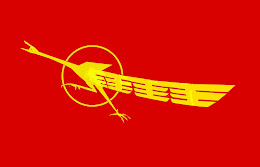








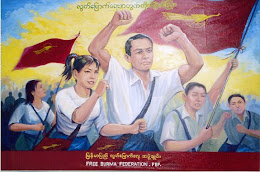





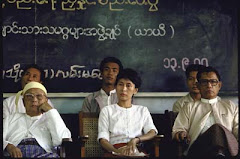

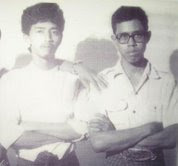


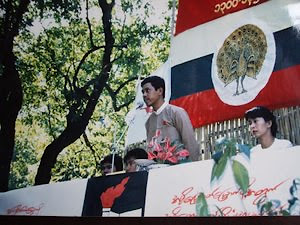
No comments :
Post a Comment